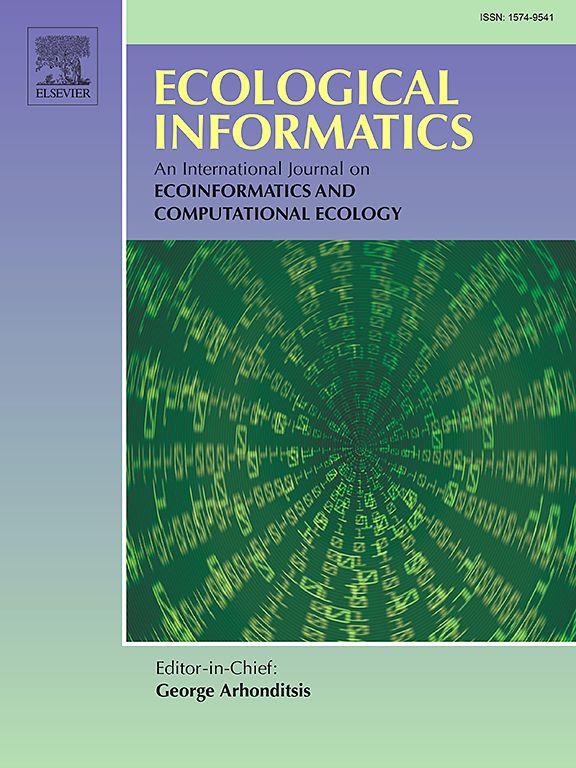A novel approach to spectral moisture interference correction for nitrogen and soil organic matter inversion in native black soils: Bayesian-optimized dynamic moisture mitigation
IF 5.8
2区 环境科学与生态学
Q1 ECOLOGY
引用次数: 0
Abstract
In recent years, portable near-infrared spectrometers have emerged as viable alternatives to conventional chemical methods for measuring total nitrogen (TN) and soil organic matter (SOM). Advances in unmanned aerial vehicle technology have enabled low-altitude aerial surveys, facilitating the quantification of TN and SOM in agricultural soils—an approach beneficial for applications such as fertilizer management. However, most studies rely on laboratory-based analyses using high-precision and nonimaging spectrometers that test dried and processed soil samples. This preference stems from the significant impact of moisture on soil reflectance spectra, particularly in moisture-rich black soils. To address this challenge, this study investigated the in situ quantitative inversion of TN and SOM contents in moist black soil using a high-throughput hyperspectral imaging system. We introduced the Bayesian-optimized dynamic moisture mitigation (BO-DMM) method—an approach that effectively corrected moisture-induced spectral distortions. The BO-DMM method reduced moisture interference, calibrating the spectral angle of moist soil spectra to shrink by 50 % toward that of dry soil spectra. To further assess the effectiveness of the BO-DMM method, we integrated it with different machine learning models to test soil properties and predict the TN and SOM contents. The results indicated that BO-DMM significantly enhanced the prediction accuracy of different soil properties across different models, providing a robust strategy to mitigate environmental interference in soil spectroscopy. This advancement paves the way for additional accurate field-based soil assessments.
原生黑土氮素和土壤有机质反演光谱水分干扰校正新方法:贝叶斯优化动态水分减缓
近年来,便携式近红外光谱仪已成为替代传统化学方法测量全氮(TN)和土壤有机质(SOM)的可行方法。无人机技术的进步使低空航空测量成为可能,促进了农业土壤中全氮和SOM的量化,这是一种有利于肥料管理等应用的方法。然而,大多数研究依赖于基于实验室的分析,使用高精度和非成像光谱仪来测试干燥和处理过的土壤样品。这种偏好源于水分对土壤反射光谱的显著影响,特别是在富含水分的黑土中。为了解决这一挑战,本研究利用高通量高光谱成像系统对湿润黑土中全氮和SOM含量进行了原位定量反演。我们介绍了贝叶斯优化动态水分缓解(BO-DMM)方法,这种方法有效地纠正了水分引起的光谱失真。BO-DMM方法减少了水分干扰,使湿土光谱的光谱角比干土光谱的光谱角缩小50%。为了进一步评估BO-DMM方法的有效性,我们将其与不同的机器学习模型相结合,以测试土壤性质并预测TN和SOM含量。结果表明,BO-DMM显著提高了不同模型对不同土壤性质的预测精度,为减轻土壤光谱中的环境干扰提供了强有力的策略。这一进展为更准确的实地土壤评估铺平了道路。
本文章由计算机程序翻译,如有差异,请以英文原文为准。
求助全文
约1分钟内获得全文
求助全文
来源期刊

Ecological Informatics
环境科学-生态学
CiteScore
8.30
自引率
11.80%
发文量
346
审稿时长
46 days
期刊介绍:
The journal Ecological Informatics is devoted to the publication of high quality, peer-reviewed articles on all aspects of computational ecology, data science and biogeography. The scope of the journal takes into account the data-intensive nature of ecology, the growing capacity of information technology to access, harness and leverage complex data as well as the critical need for informing sustainable management in view of global environmental and climate change.
The nature of the journal is interdisciplinary at the crossover between ecology and informatics. It focuses on novel concepts and techniques for image- and genome-based monitoring and interpretation, sensor- and multimedia-based data acquisition, internet-based data archiving and sharing, data assimilation, modelling and prediction of ecological data.
 求助内容:
求助内容: 应助结果提醒方式:
应助结果提醒方式:


